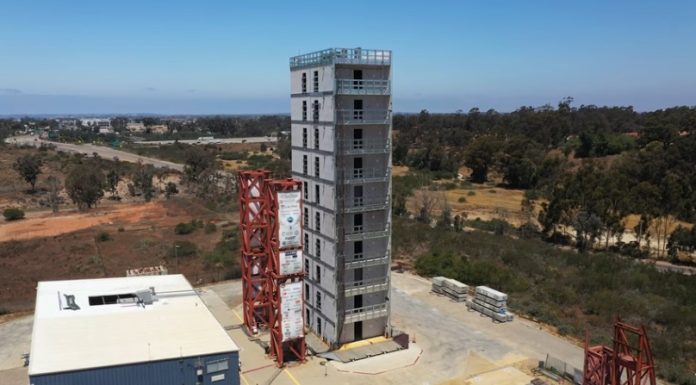
In a groundbreaking experiment, engineers have tested the tallest steel-framed building ever placed on an earthquake simulator—and it stood strong.
The 10-story, 100-foot structure was built using a lightweight material called cold-formed steel (CFS) and shaken with real earthquake motions to see how it would hold up.
The goal?
To find out whether buildings made with this material can be taller than current rules allow—even in earthquake-prone areas.
The tests took place at the University of California San Diego, using one of the world’s largest earthquake simulators, known as a shake table.
Funded by the U.S. National Science Foundation (NSF), this is the only shake table located outdoors, which is crucial for testing large structures. It’s also the only one in the world that can test buildings over 90 feet tall.
Right now, building codes limit cold-formed steel buildings to six stories or 65 feet. This experiment aimed to prove that they can safely go as high as 10 stories, which would allow for more sustainable and faster construction options. So far, the results look promising.
According to Professor Tara Hutchinson, who led the study, the building performed well during 18 different simulated earthquakes, including intense ones like the 1989 Loma Prieta earthquake, which had a magnitude of 6.9.
The structure stayed intact, and even though researchers expected some damage to interior parts like walls and stairs, everything remained functional, including the stairways needed for emergency exits.
The building was filled with nearly 1,000 sensors to track every detail—how it moved, how much it shook, and how different parts responded. This data will help improve future building codes and support the use of cold-formed steel in taller buildings.
One big advantage of CFS is that it’s lightweight and made from mostly recycled metal. It’s also non-combustible, making it safer in fire situations.
Because it’s light, it can be used in modular construction—where building parts are pre-made and then assembled like giant LEGO bricks. This approach significantly reduces construction time.
The shake table used for this project recently received a $17 million upgrade from the NSF. Before the upgrade, it could only shake buildings back and forth in one direction.
Now it can move in six different ways—up, down, side to side, and in twisting motions—allowing for much more realistic earthquake simulations. During one test, researchers saw the building twist slightly, something that wouldn’t have been noticeable with the old table setup.
Next up are fire tests. The research team will examine how fire, smoke, and heat move through parts of the building damaged by the simulated earthquakes.
These follow-up tests, led by Professor Richard Emberley at Cal Poly, will help scientists understand what might happen if a fire breaks out after an earthquake. Since cold-formed steel doesn’t burn, it could offer real advantages in these kinds of situations.
With these tests, researchers hope to change what’s possible in future construction—allowing for safer, taller, and faster-to-build structures that can better withstand natural disasters.



